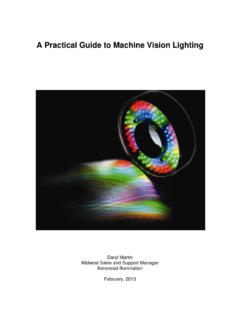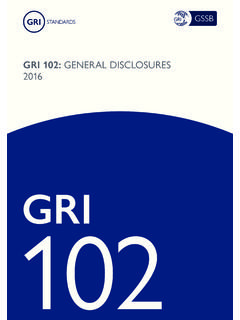Transcription of Ballistic Resistance of Body Armor NIJ Standard-0101
1 JULY 08 Department of Justice Office of Justice Programs National Institute of Justice standards Ballistic Resistance of Body Armor NIJ Department of Justice Office of Justice Programs 810 Seventh Street Washington, DC 20531 Michael B. Mukasey Attorney General Jeffrey L. Sedgwick Acting Assistant Attorney General David W. Hagy Director, National Institute of Justice This and other publications and products of the National Institute of Justice can be found at: National Institute of Justice Office of Justice Programs Innovation Partnerships Safer Neighborhoods ABOUT THE LAW ENFORCEMENT AND CORRECTIONS standards AND TESTING PROGRAM The standards and Testing Program is sponsored by the Office of Science and Technology of the National Institute of Justice (NIJ), Office of Justice Programs, Department of Justice.
2 The program responds to the mandate of the Homeland Security Act of 2002, which directed the Office of Science and Technology to establish and maintain performance standards in accordance with the National Technology Transfer and Advancement Act of 1995 (Public Law 104 113) to test and evaluate law enforcement technologies that may be used by Federal, State, and local law enforcement agencies. The Homeland Security Act of 2002 also directed the Office of Science and Technology to establish and maintain a program to certify, validate, and mark or otherwise recognize law enforcement technology products that conform to the standards mentioned above.
3 The standards and Testing Program is a basic and applied research effort that determines the technological needs of justice system agencies, sets minimum performance standards for specific devices, tests commercially available equipment against those standards , and disseminates the standards and the test results to criminal justice agencies nationally and internationally. The Office of Law Enforcement standards (OLES) at the National Institute of standards and Technology develops voluntary national performance standards for compliance testing to ensure that individual items of equipment are suitable for use by criminal justice agencies.
4 The standards are based upon laboratory testing and evaluation of representative samples of each item of equipment to determine the key attributes, develop test methods, and establish minimum performance requirements for each essential attribute. In addition to the technical standards , OLES also produces technical reports and user guidelines that explain in nontechnical terms the capabilities of available equipment. The National Law Enforcement and Corrections Technology Center (NLECTC), operated by a grantee, coordinates a national compliance testing program conducted by independent laboratories. The standards developed by OLES serve as performance benchmarks against which commercial equipment is measured.
5 Publications are available at no charge through NLECTC. Some documents are also available online at To request a document or additional information, call 800 248 2742 or 301 519 5060, or write: National Law Enforcement and Corrections Technology Center 2277 Research Boulevard, Mailstop 8J Rockville, MD 20850 E-mail: World Wide Web address: The National Institute of Justice is a component of the Office of Justice Programs, which also includes the Bureau of Justice Assistance, the Bureau of Justice Statistics, the Community Capacity Development Office, the Office for Victims of Crime; the Office of Juvenile Justice and Delinquency Prevention, and the Office of Sex Offender Sentencing, Monitoring, Apprehending, Registering, and Tracking (SMART).
6 I This page intentionally left blank. ii Department of Justice Office of Justice Programs National Institute of Justice Ballistic Resistance of Body Armor NIJ Standard Supersedes: NIJ 2005 Interim Requirements, Ballistic Resistance of Body Armor (August 2005) Also supersedes: NIJ Standard Rev. A, Ballistic Resistance of Personal Body Armor (June 2001) Coordination by: Office of Law Enforcement standards National Institute of standards and Technology Gaithersburg, MD 20899 8102 Prepared for: National Institute of Justice Office of Science and Technology Washington, DC 20531 July 2008 NCJ 223054 iii NATIONAL INSTITUTE OF JUSTICE David Hagy Director John Morgan Deputy Director for Science and Technology Marc Caplan Chief, Operational Technologies Division Debra Stoe Physical Scientist, Operational Technologies Division The technical effort to develop this standard was conducted under Interagency Agreement 2003 IJ R 029.
7 This standard was formulated by the Office of Law Enforcement standards (OLES) of the National Institute of standards and Technology (NIST). The participants in the research and revision of this standard were: Kirk Rice, Program Manager, Weapons and Protective Systems Michael A. Riley, Program Manager, Weapons and Protective Systems, Testing and Evaluation Amanda Forster, Materials Research Engineer The preparation of this standard was sponsored by the National Institute of Justice. iv FOREWORD This document, NIJ Standard , Ballistic Resistance of Body Armor , is a minimum performance standard developed in collaboration with the Office of Law Enforcement standards (OLES) of the National Institute of standards and Technology (NIST).
8 It is produced as part of the standards and Testing Program of the National Institute of Justice (NIJ), Office of Justice Programs, Department of Justice. This standard is a technical document that specifies the minimum performance requirements that equipment must meet to satisfy the requirements of criminal justice agencies and the methods that shall be used to test this performance. This standard is used by the NIJ Voluntary Compliance Testing Program (CTP) to determine which body Armor models meet the minimum performance requirements for inclusion on the NIJ Compliant Products List. In addition, manufacturers, criminal justice agencies, and others may use the tests described in this standard to determine whether a particular Armor design meets their own requirements.
9 Users are strongly encouraged to have this testing conducted in accordance with the NIJ CTP. Procurement officials may also refer to this standard in their purchasing documents and require that equipment offered for purchase meet or exceed these requirements. This document is a testing and performance standard and provides precise and detailed test methods. Additional requirements, processes, and procedures for CTP participants are detailed in the NIJ Voluntary CTP Administrative Procedures Manual. Those seeking guidance concerning the selection and application of body Armor should refer to the most recent revision of the Selection and Application Guide to Personal Body Armor , NIJ Guide 100, which is published as a separate document and explains in nontechnical language how to select equipment that provides the level of performance required by a purchasing agency.
10 Publication of this revision of the standard does not invalidate or render unsuitable any body Armor models previously determined by NIJ to be compliant to either the NIJ 2005 Interim Requirements or the NIJ Standard Rev. A Requirements. While it may not necessary to remove these existing armors from service, agencies are advised to always require their procurements to meet or exceed the most recent and up-to-date version of this standard. Personal body Armor that is independently tested to this standard by manufacturers, purchasers, or other parties will not be considered as NIJ compliant unless the body Armor is submitted and tested through the NIJ CTP and found in compliance with this standard.
















